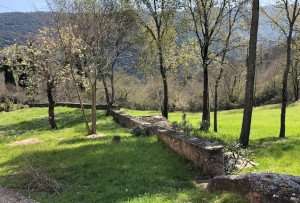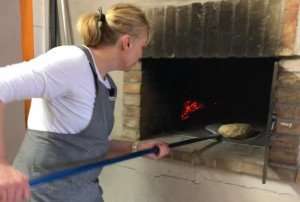Top Food and Drink Trends for Summer
June 14, 2024
There are very few activities we find more exciting or interesting than trying new foods and cooking our favorite innovations at home. Summer is…
Read This Post Our friend Richard di San Marzano in Spoleto is contributing a guest post for us letting us know what life has been like the past year in one of our favorite Italian regions, Umbria. Italy’s national lockdown began on March 8, 2020 (although there were regional quarantines before then), and it has continued, like much of the world, with varying levels of restrictions since then.
Our friend Richard di San Marzano in Spoleto is contributing a guest post for us letting us know what life has been like the past year in one of our favorite Italian regions, Umbria. Italy’s national lockdown began on March 8, 2020 (although there were regional quarantines before then), and it has continued, like much of the world, with varying levels of restrictions since then.
If you’ve wondered about what it would be like to experience lockdown in Italy as a foodie, read on!
 “When lockdown was introduced in Umbria around a year ago it was spring and if there were any blessings to be counted it was for living on the slopes of a hill overlooking Spoleto with our land edged by woods.
“When lockdown was introduced in Umbria around a year ago it was spring and if there were any blessings to be counted it was for living on the slopes of a hill overlooking Spoleto with our land edged by woods.
“My wife and I foraged almost daily, especially ‘hunting’ the elusive wild asparagus. It turned out to be one of the best seasons in recent years, and as a devoted wild asparagus-loving household we enjoyed our various favorite ways to prepare these slender green spheres and experimented aplenty along the way: from pasta ‘in bianco’, as a carbonara, in a tomato sauce, in lasagna, omelets, grilled, on bruschetta, in soups, and a particular house favorite, in pesto and a new specialty of my wife, stir fry noodles in the southern Vietnamese style. I don’t recollect us tiring of dining on them even as the season extended into early summer.”
Discover Spoleto with Richard during an authentic culinary tour.
 The Sublime Stinging Nettle
The Sublime Stinging Nettle“A second wild plant we harvested, as we do every spring along with wild garlic and onions, is the common stinging nettles (urtica dioica). This versatile ingredient is both tasty and rich in iron and vitamin C. The humble nettle is so nutritional it has been speculated by a botanist that if this wild plant did not have its sting to defend itself, it in all likelihood would have been long since eaten into extinction by foraging animals, let alone by humankind before the invention of rubber gloves.
“Once you get the hang of it, harvesting nettles is quite simple and they are very easy to prepare. This versatile plant, aside from making a marvelous addition to pesto, can be added to pasta much in the way that one might use any green vegetable, as well as to soups, risotto etc.”
Read more about Spoleto from Richard di San Marzano.
 Baking Bread during the Lockdown
Baking Bread during the Lockdown“We were fortuitous while filming episodes for a documentary series about the food of the region, during the early stages of what was then a partial lockdown, to make an episode about a family and their farm where they cultivate, harvest, and mill their own organic wheat and other grains, and bake traditional bread in a wood burning oven and then distribute a limited number of their excellent loaves to a couple of gourmet shops . They generously gave us a sample of their mother yeast, which dates back to 1973, and which we have since used constantly. A mother yeast of this kind makes a discernable difference when baking bread.
 “My ever creative wife would sometimes amuse our two daughters by shaping the loaves into animals as you can see in the attached photos, one of which pays homage to the not infrequent visits of the cinghiale (wild boar) who come quite close to the terrace, much to the annoyance of our courageous little dog.
“My ever creative wife would sometimes amuse our two daughters by shaping the loaves into animals as you can see in the attached photos, one of which pays homage to the not infrequent visits of the cinghiale (wild boar) who come quite close to the terrace, much to the annoyance of our courageous little dog.
“Visiting the stunningly beautiful farm and making a loaf of bread with this family is a new optional feature of our Spoleto culinary tour.
 “Speaking strictly on a personal note, it occurred to me sometime into the lockdown, that I don’t think I ever quite before appreciated my first cup of coffee of the day as much as I have these last many months, and also the ritual of making it with a trusty old Alessi cafeteria.”
“Speaking strictly on a personal note, it occurred to me sometime into the lockdown, that I don’t think I ever quite before appreciated my first cup of coffee of the day as much as I have these last many months, and also the ritual of making it with a trusty old Alessi cafeteria.”
“Our summer table frequently featured the delicate summer black truffle, which is affordable enough to use generously compared to the more valued winter black truffle (tartufo scorzone and tartufo pregiato ).
 “My wife and children are vegetarian but I enjoy meat when in the mood, especially prepared in a particular way I learnt from a chief friend in which one briefly singes the meat on a BBQ, than stir-fries it in a covered pan with fresh rosemary, salt, and pepper. It’s simple and fabulous.
“My wife and children are vegetarian but I enjoy meat when in the mood, especially prepared in a particular way I learnt from a chief friend in which one briefly singes the meat on a BBQ, than stir-fries it in a covered pan with fresh rosemary, salt, and pepper. It’s simple and fabulous.
“I made champagne risotto, a dish that once was all the rage, especially amongst the foodies of the Italy of ‘La dolche vita.’ It can be made equally well with a decent prosecco . This dish is delicious as is, or can be used as an indulgent canvas on which to add truffles, caviar, asparagus, lobster or prawns.”
Discover a recipe from our Secrets of Spoleto cooking vacation.
 “The fall into winter bought us the new olive oil and daily bruschetta, as well as chestnuts from our ancient tree. We purchase olive oil directly from a mill where the same family has produced oil since around 1650, and we long since picked up a very simple and counter-intuitive combination that appears in no cookbook, to the best of my knowledge.
“The fall into winter bought us the new olive oil and daily bruschetta, as well as chestnuts from our ancient tree. We purchase olive oil directly from a mill where the same family has produced oil since around 1650, and we long since picked up a very simple and counter-intuitive combination that appears in no cookbook, to the best of my knowledge.
“You carefully peel an orange, delicately removing the pith as well. Then slice it, sprinkle it with sugar, and drizzle it with newly pressed oil. It is really good, and an alchemy seems to occur that exceeds the sum total of the three ingredients and is a nice way to surprise friends and guests with the unexpected.
 “A typical Umbrian way to prepare chestnuts is to cook them with lentils in a rich autumn/winter stew, aside from the usual method of toasting them in a special pan over an open fire.
“A typical Umbrian way to prepare chestnuts is to cook them with lentils in a rich autumn/winter stew, aside from the usual method of toasting them in a special pan over an open fire.
“Now, it is a year later, and it’s the early spring again. The happy tidings of several new vaccines in distribution mean we can hope that 2021 will be a great improvement on 2020, and that I will be able to recommence sharing culinary and cultural adventures and the beauty and wonders of this region with you.”
– Richard di San Marzano, Spoleto March 1 2021.
 Check back to enjoy three ‘flexible’ recipes from the kitchen of Richard and his family:
Check back to enjoy three ‘flexible’ recipes from the kitchen of Richard and his family:
And of course, contact us if you’d like to start planning your culinary vacation in Spoleto with Richard!
By Peg Kern
Sign up to receive our newsletter, which includes travel tips, recipes, promotions, and information on our best cooking vacations.
Find more photos, videos, food facts, and travel stories from The International Kitchen on Facebook, Instagram, Pinterest, Twitter, and YouTube.